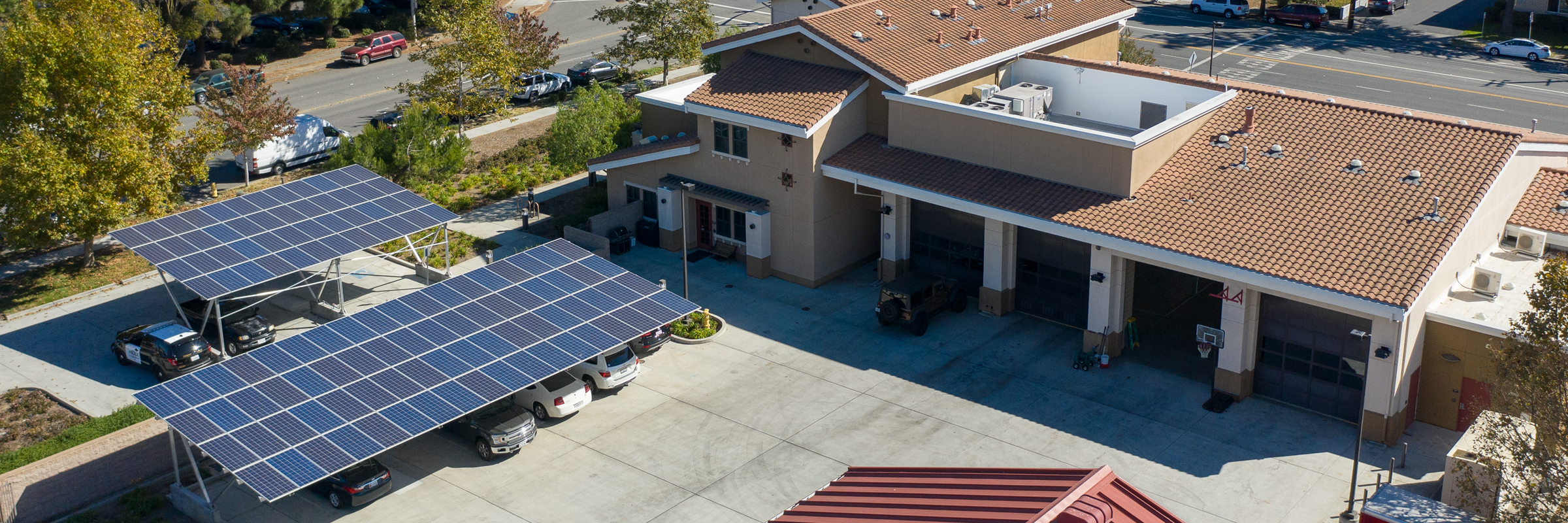With extreme weather events and cyber threats on the rise, photovoltaic (PV) powered microgrids have attracted the attention of legislators, the utilities, and the public. A PV microgrid is essentially a very large, smart, solar powered uninterruptible power supply (UPS). It can contribute power to a utility grid during peak generation periods and automatically disconnect from it during a power failure. After sensing an outage, a PV microgrid can continue to distribute power generated directly from the sun and/or draw from batteries in “island mode” until grid power is restored and the microgrid safely reconnects to the grid.
In 2015, the CEC allocated rate-payer funds collected by the Electric Program Investment Charge (EPIC) to commission seven pilot microgrid installations. The Fremont Fire District was selected as one of the EPIC test projects. Historically, fossil-fuel generators alone have been used for such microgrids. However, these pilot installations will demonstrate that it is now more cost-effective to install PV, with its endless free energy, than to build a fossil-fuel generator and then purchase and deliver its dirty fuel for untold generations to come.
Sun Light & Power proudly designed and installed the photovoltaic (PV) solar arrays on the shade structures located at Stations 6 and 7. These two stations and Station 11 comprise three independent microgrids designed by industry innovators Gridscape Solutions. The EPIC microgrids are avoiding PG&E’s peak demand charges using net energy metering (NEM). Crucially, Fremont’s 115 kW microgrids will reduce CO2 emissions by 600 tons (1.2 million lbs.) over 10 years.
Choosing the right battery technology for a PV system and the optimum location to install it is crucial for resiliency. Currently the most popular battery choice is the Lithium-Ion (Li) battery, known for its high power density (more kW hours in a smaller space), a high power rating (maximum continuous output measured in kW), high efficiency (kW stored vs. kW discharged), a high Depth of Discharge (DOD) (the percentage of capacity that a battery can safely discharge before a recharge), and a high cycle life (the number of times the battery can be fully cycled before it loses capacity). Because extreme heat and cold adversely affect battery longevity and performance, an installation location that maintains an operating temperature between 30°F and 90°F is crucial for Li batteries. All of these factors affect battery duty cycle and will impact your ability to draw from the battery system in an emergency.
Getting this balance right differs considerably between commercial and residential installations both in terms of total power required and space limitations. For instance, the PV arrays used for Fremont Fire District’s microgrids at Stations 6 (39 kW) and 7 (~43 kW) are each coupled with a large 110 kWh Li battery system situated in the open air outside the firehouse. The microgrids can sustain the critical loads of each station for three hours per day without using a generator. Fremont’s microgrid has successfully achieved “island mode” during 3 and 6-hour tests respectively, and they are now planning a 12-hour test.
For now, as these technologies shake out, Sun Light & Power recommends a go-slow approach with battery storage, proceeding with a “storage ready” PV system, especially while the tax incentives are still favorable. This approach could allow you to contribute to the resiliency of a local microgrid and add the right battery solution to suit your needs when you are ready. By design, such a system could also incorporate a new or existing electric vehicle charging station (EVCS). We will be reviewing these storage options in detail soon and the federal solar tax credits that apply to them, so be sure to stay tuned.
Contact Sun Light & Power today for more information on the solar solution that is right for you or your business.
Seamas Brennan is a Blog Contributor, Researcher, and Engineering Admin. Assistant at Sun Light & Power
